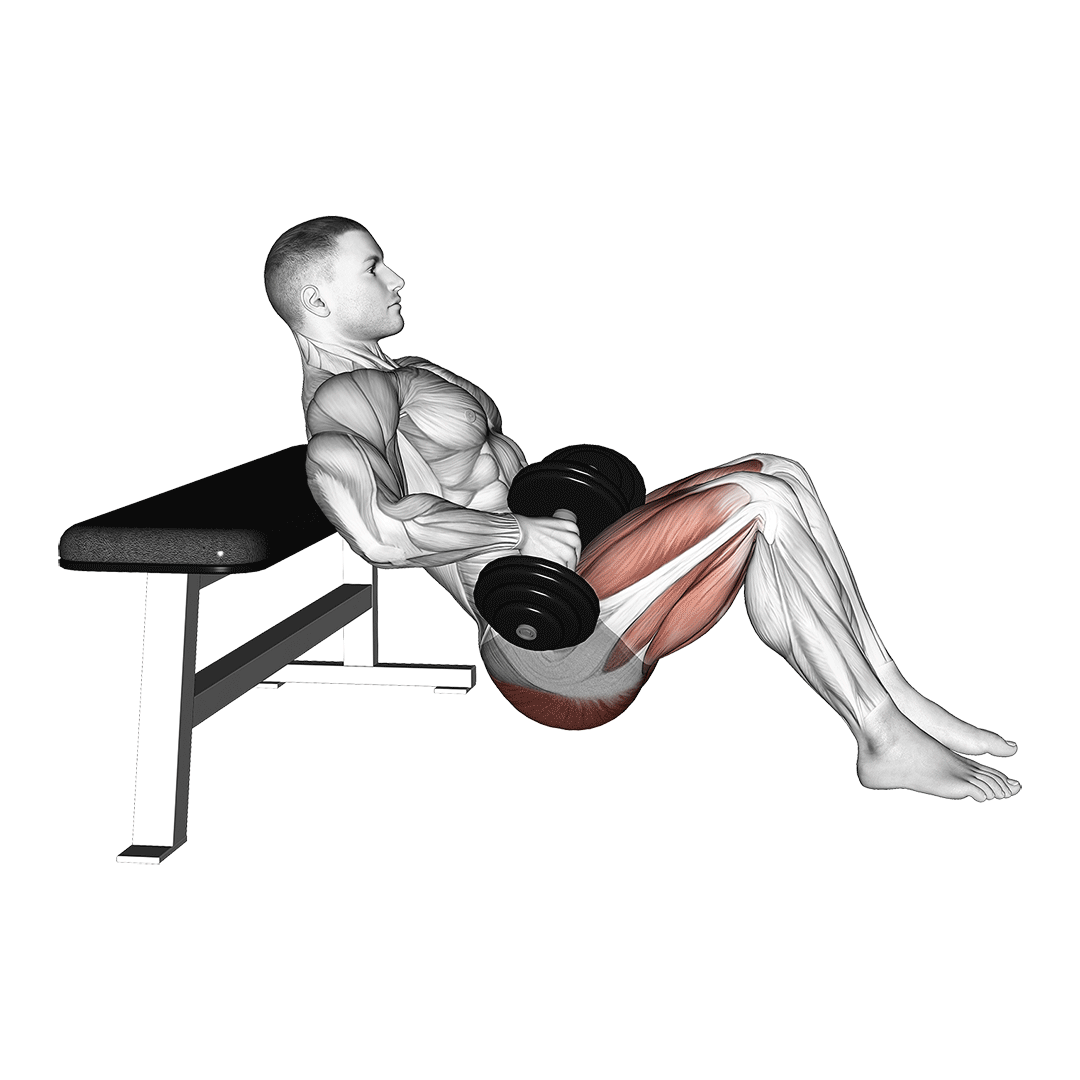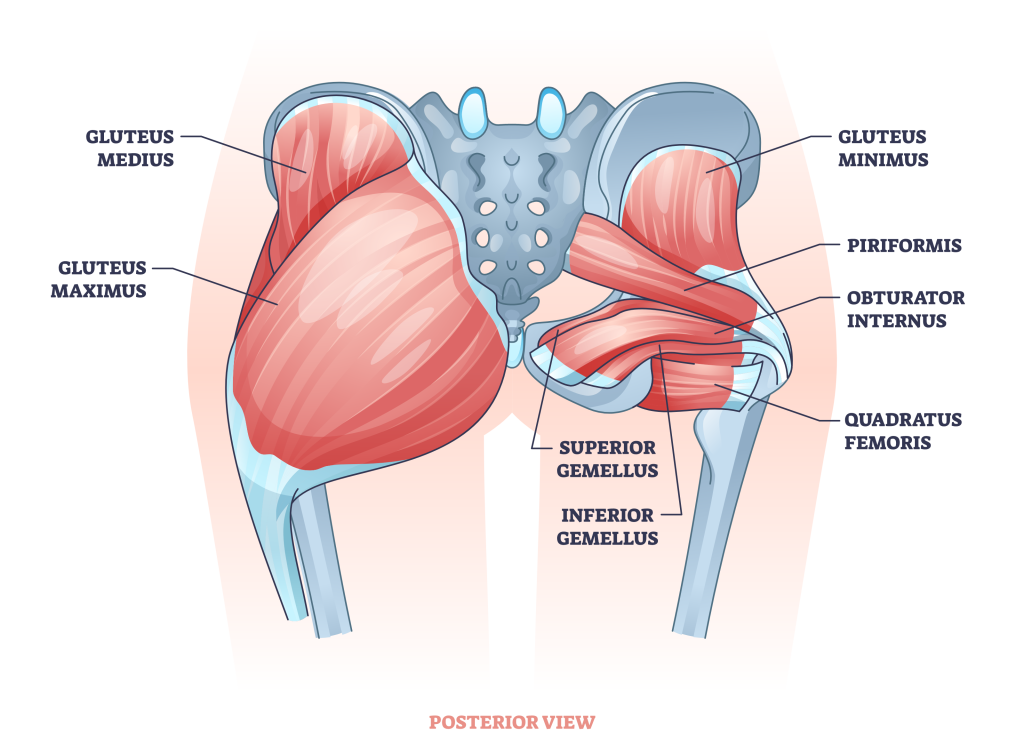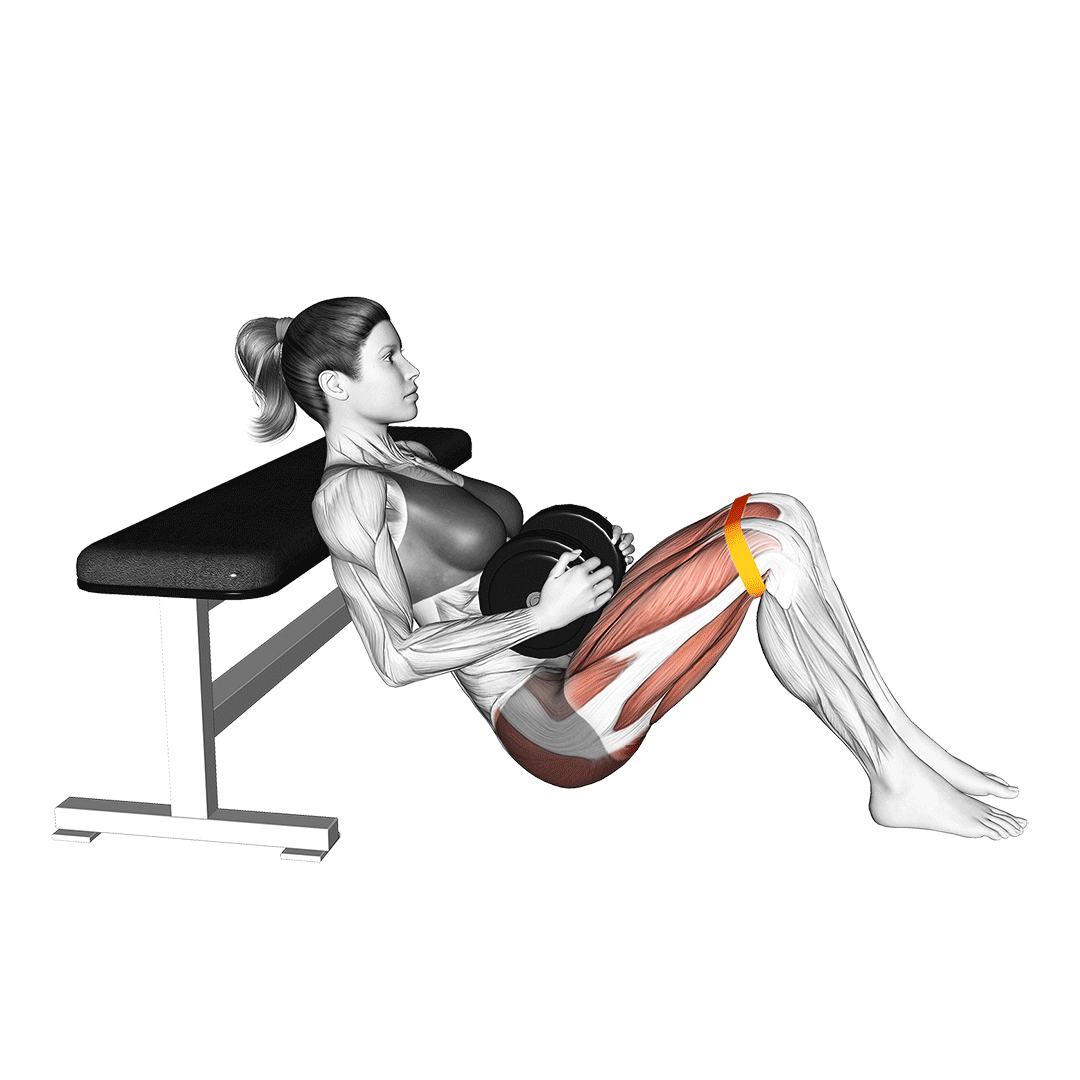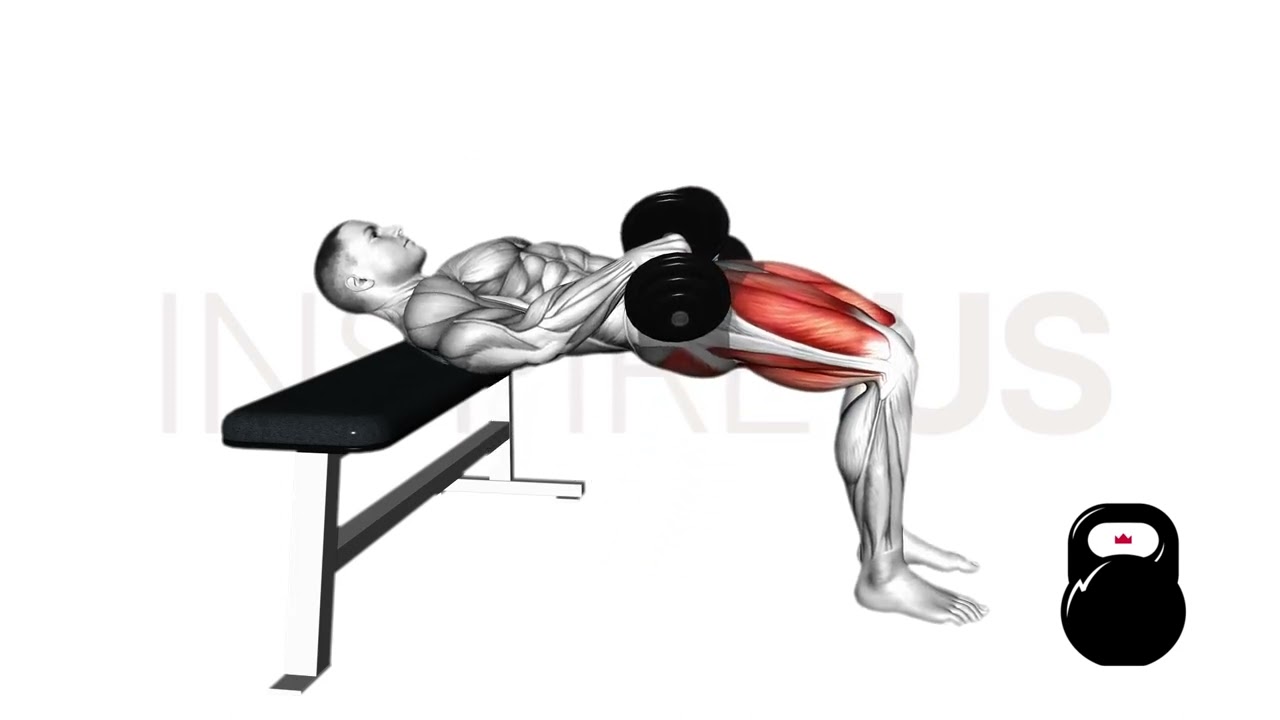Dumbbell Hip Thrust: Benefits, Muscles Worked, and More
A dumbbell hip thrust is a lower-body exercise that is performed while sitting on the ground with a dumbbell resting on the hips. The exercise involves lifting the hips towards the ceiling while keeping the feet firmly planted on the ground.

Proper form is crucial to avoid the incidence of injury. This includes keeping the shoulders and upper back on a bench/raised support, engaging the core muscles, and using the glutes to lift the hips.
Dumbbell hip thrusts are a valuable addition to any lower body strength training routine and can benefit individuals seeking to target the posterior chain muscles and build lower body strength.
How to Perform a Dumbbell Hip Thrust
To perform dumbbell hip thrusts, first sit on the ground with a bench or box behind the back for support. Next, place a dumbbell on the hips and bend the knees to a 90-degree angle, with the feet firmly planted on the ground.
Engage the core muscles and use the glutes to lift the hips off the ground, pushing the dumbbell towards the ceiling. Throughout the movement, ensure that the shoulders and upper back remain on the bench.
Hold this position for a few seconds, then slowly lower the hips back down to the ground. Repeat this movement for the desired number of repetitions.
Muscles Worked in a Dumbbell Hip Thrust
Dumbbell hip thrusts primarily target the gluteus maximus, the largest muscle in the buttocks.
This muscle is responsible for hip extension and thigh abduction, which makes it a crucial muscle for walking, running, and many other lower-body movements; The hamstrings and lower back muscles also play a secondary role in this exercise.
During dumbbell hip thrusts, the gluteus maximus is activated through hip extension, which involves straightening the hips and pushing the pelvis toward the ceiling. This movement forces the glutes to contract and generate force to lift the weight.

The hamstrings also play a role in hip extension and work in conjunction with the glutes to complete the movement. The lower back muscles are activated to provide stability and support to the spine and pelvis during the exercise.
The addition of dumbbells to the hip thrust exercise increases the resistance and challenges the muscles to work harder. This increased resistance leads to increased muscle activation and development. The use of dumbbells also helps to promote more significant hip extension and glute activation compared to bodyweight hip thrusts.
It is important to ensure that the correct muscles are being targeted and to prevent injury. This is achieved by maintaining the proper form which involves keeping the feet firmly planted on the ground, engaging the core muscles, and using the glutes to lift the hips.
It is also important to avoid hyperextending the spine, which can lead to lower back pain and injury.
Benefits of the Dumbbell Hip Thrust
Glute Development
Dumbbell hip thrusts target the gluteus maximus, the largest muscle in the buttocks.

By using dumbbells, the resistance is increased and challenges the glutes to work harder, leading to increased muscle activation and development.
Strong glutes not only improve one’s physical appearance but also play a crucial role in everyday activities such as walking, running, and climbing stairs.
Increased Hip Extension and Power
Proper form during dumbbell hip thrusts requires the engagement of the core muscles, which helps to improve posture and spinal health. This exercise also helps to strengthen the muscles of the lower back, which can help to prevent lower back pain and injury.
Improved Posture and Spinal Health
Hip extension is an important movement for many lower body activities, including running and jumping. Dumbbell hip thrusts can help to improve hip extension by targeting the glutes and hamstrings, which are key muscles for this movement.
By improving hip extension, overall lower body power and athletic performance are improved.
Versatility and Accessibility
Dumbbell hip thrusts can be performed almost anywhere with just a dumbbell and a bench or box for support. This makes it a versatile exercise that can be easily incorporated into any workout routine.
Additionally, the exercise can be modified to accommodate different fitness levels and goals, such as by adjusting the weight or number of repetitions.
Dumbbell Hip Thrust Variations
1. Single-Leg Dumbbell Hip Thrusts
To perform single leg dumbbell hip thrusts, begin by lying on the back with one foot flat on the ground and the other foot lifted off the ground. Hold a dumbbell on the hip of the leg that is on the ground. The hips should be lifted towards the ceiling using the glutes and hamstrings to lift the body off the ground.

After lifting, lower the hips back down to the ground and repeat for the desired number of repetitions. After completing the repetitions, switch legs and repeat the exercise on the opposite side.
This variation is useful in targeting the glutes and hamstrings on one side at a time while improving balance and stability.
2. Banded Dumbbell Hip Thrusts
Banded hip thrusts are a lower body exercise that can help strengthen the glutes, hamstrings, and lower back muscles. To perform banded hip thrusts, begin by securing a resistance band around both legs, just above the knees.

Next, sit on the floor with the back against a bench or elevated surface and the feet flat on the ground. Place a weighted barbell across the hips, holding onto it with both hands. Engage the core and squeeze the glutes as the hips are raised off the ground, pushing against the resistance band.
Pause at the top of the movement before lowering the hips back down to the starting position. Repeat this movement for several reps, focusing on maintaining proper form and engaging the targeted muscles.
Remember to adjust the weight and resistance band tension as needed to ensure a challenging but manageable workout. As with any exercise, it is important to consult with a healthcare professional before beginning a new fitness routine.
3. Pause Dumbbell Hip Thrusts
Pause dumbbell hip thrusts are an effective exercise for strengthening the glutes, hamstrings, and lower back muscles. To perform this exercise, start by sitting on the ground with the back against a bench or elevated surface.
Hold a dumbbell on each hip, with the knees bent and feet flat on the ground.
Engage the core and lift the hips off the ground, squeezing the glutes as the top of the movement is reached. Once the top is reached, pause for several seconds before slowly lowering the hips back down to the starting position.
Incorporating pause dumbbell hip thrusts into an exercise routine can help achieve greater strength and tone in the lower body muscles.
References
1. Contreras B, Cronin J, Schoenfeld B. Barbell hip thrust. Strength & Conditioning Journal. 2011 Oct 1;33(5):58-61.
2. Contreras B, Vigotsky AD, Schoenfeld BJ, Beardsley C, Cronin J. A comparison of gluteus maximus, biceps femoris, and vastus lateralis electromyographic activity in the back squat and barbell hip thrust exercises. Journal of applied biomechanics. 2015 Dec 1;31(6):452-8.

